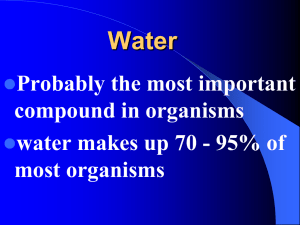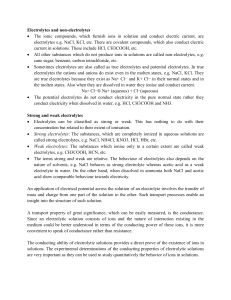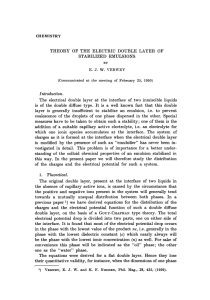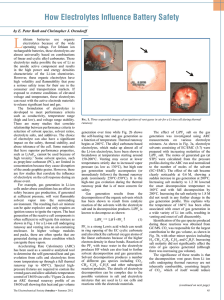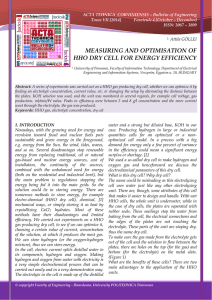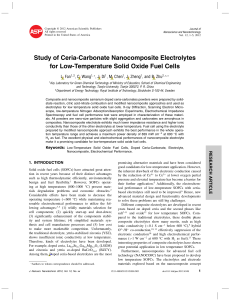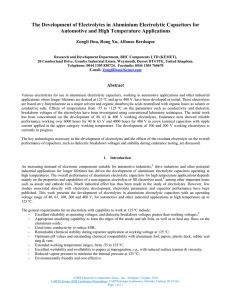Chapter 7: Solutions
advertisement
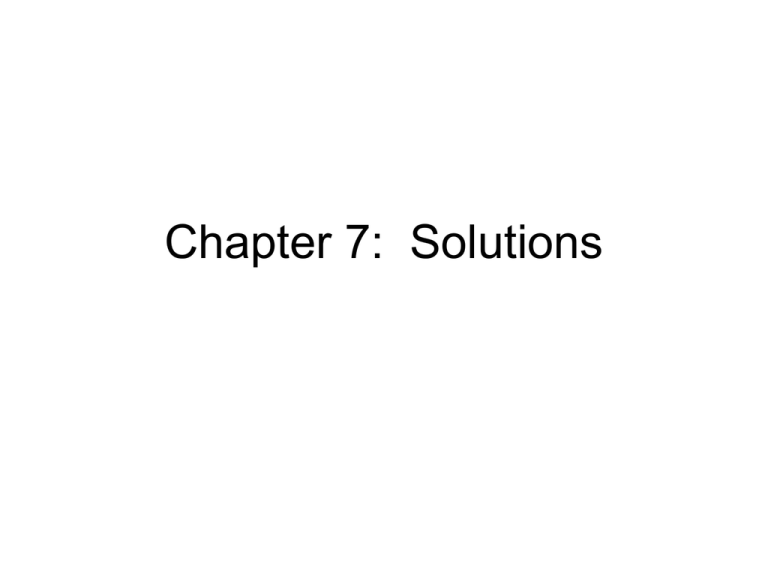
Chapter 7: Solutions Solutions • Mixture – Solute is uniformly distributed in the Solvent • Water is the most common solvent Hydrogen bonds • Hydrogen bonding – Very important interactions (not just with water) Hydrogen bonds • Hydrogen bonds in Biology are very important • Example: DNA Examples of Solutions Solutions • Gases form solutions easily – Particles move rapidly – Don’t have any attraction to themselves anyway • Solids and liquids: – “like dissolves like” – Polar solvents dissolve ionic and polar compounds – Nonpolar solvents dissolve nonpolar compounds Electrolytes Electrolyte: solute that conducts electricity when dissolved • Strong electrolyte: – dissociates completely into ions in water NaCl (s) Na (aq) Cl (aq) H2 O • Weak electrolyte: – only a few molecules dissociate into ions in water – Conduct electricity weakly – Dissociation / recombination HF (aq) H (aq) F (aq) Electrolytes • Nonelectrolytes: – Dissolve in water as whole molecules 2O C12H 22O11 (s) H C12H 22O11 (aq) Electrolytes Equivalents Equivalent: amount of ion equal to 1 mole of positive or negative electrical charge How many moles of sodium ions are in 500. mL of blood, if a typical concentration for Na+ in the blood is 138 mEq/L?

